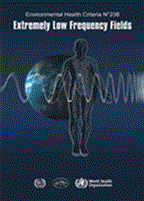
Electromagnetic fields of all frequencies represent one of the most common and fastest growing environmental influences, about which anxiety and speculation are spreading.
Electromagnetic fields
Common sources of electromagnetic fields include power lines, household electrical wiring, motor-driven instruments, computer screens, telecommunications and broadcasting facilities, and mobile telephones.
The International Agency for Research on Cancer (IARC) has classified radiofrequency electromagnetic fields as possibly carcinogenic to humans (Group 2B), a category used when causal association is considered credible, but when chance, bias or confounding cannot be ruled out with reasonable confidence.
Short-term exposure at levels present in the environment or in homes does not cause any apparent detrimental effects. Studies carried out by Indian Council of Medical Research (ICMR) not establish conclusive evidence on the safety or risk of radiofrequency radiation emitted from mobile phones and mobile phone towers.
As part of its charter to protect public health and in response to public concern over health effects of electromagnetic fields (EMF) exposure, WHO established the International EMF Project in 1996 to assess the scientific evidence of possible health effects of EMF in the frequency range from 0 to 300 GHz. Since 2008, the Department of Telecommunication, has been monitoring international advances and has already taken essential steps to adopt stringent norms for protection from EMF radiation emitted from mobile towers and mobile handsets.
Mobile phones are now an integral part of modern telecommunications. Given the large number of mobile users, it is important to investigate, understand and monitor any potential public health impact that can be attributed to their use.
Tissue heating is the principal mechanism of interaction between radiofrequency energy and the human body. At the frequencies used by mobile phones, most of the energy is absorbed by the skin and other superficial tissues, resulting in negligible temperature rise in the brain and/or other organs of the body. To date, research does not suggest any consistent evidence of adverse health effects from exposure to radiofrequency fields at levels below those that cause tissue heating.
A large retrospective case-control study on adults coordinated by IARC to determine whether there are links between use of mobile phones and head and neck cancers in adults concluded that biases and errors limit the strength of these conclusions and prevent a causal interpretation.
However, increasing use of mobile phones and lack of data for mobile phone use over time periods longer than 15 years warrants further research of mobile phone use and brain cancer risk.
Technical links


